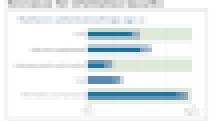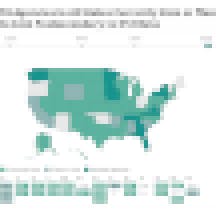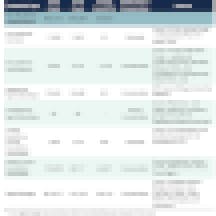An “uber trend” of remote work for higher education information security is coming, at a time when more connections are being forged between higher ed and other state data. Plus: printers, smart speakers and privacy (oh my!) — all in this Edtech Reports Recap.
That Horizon Seems to Be … Closer
“Higher education may never be the same again after 2020, and that will be an exciting prospect to some.” So declares the newest forward-looking publication from the higher-ed information technology association EDUCAUSE, “2021 EDUCAUSE Horizon Report: Information Security Edition.”
The trend-spotting Horizon Report series is a long-standing tradition—it dates back to 2004, first under the banner of the now-defunct New Media Consortium and then, after 2017, continued independently by its long-time partners: the Consortium for School Networking (CoSN) in K-12 and EDUCAUSE in higher education. But this Horizon Report represents a couple of firsts.
One: It’s the inaugural Horizon Report focused on information security, after the many previous editions that broadly covered “teaching and learning.” Two: It’s the first Horizon Report to not simply forecast developments in several areas, but to declare an “uber trend.”
In 2021, that pandemic-inspired uber trend is “remote work.” It’s significant, the report says, because its “multifaceted” impacts on the future of higher education information security can’t just be tucked under one of the report’s five trend categories. That “would both seem to diminish the importance of this trend relative to the other trends and mischaracterize it as one type of trend and not any other.”
The potential impacts, good and bad? A greater hiring pool for now-remote infosec professionals, heightened data privacy concerns, and a need to rethink information security staff and resources now that the campus security perimeter no longer is just physical.
In short, the authors note, “security and data privacy have an extraordinary and increasing significance on the horizon of higher education institutions.”
This being a Horizon Report, it’s dense with detail. Some 50 higher education experts from the United States, Canada and Australia took part in a modified Delphi process of discussion and consensus voting to identify and condense trends. The result is 50 pages that include what are considered the three most important infosec trends in each of five areas: social, technological, economic, environmental and political. Some of the 15 seem obvious (“shifts to remote learning”), others eyebrow-raising (“demand for electricity”), and some downright creepy (“authoritarian surveillance”).

The report goes on to highlight six key technologies and practices that could provide comfort: cloud vendor management, endpoint detection and response, multifactor authentication/single sign-on, preserving data authenticity/integrity, research security, and student data privacy and governance. These are followed by several scenarios and essays on the implications.
It makes me insecure to assume this higher-ed information security motherlode could be summarized concisely in ten paragraphs. But it may be enough to know the report exists and can be freely downloaded and doom-scrolled to assess the thinking of dozens of experts.
And in case you’re wondering: EDUCAUSE does say there will be a second 2021 Horizon Report, implying its annual “teaching and learning” edition will continue.
Data Tendrils Increase Their Reach
Higher education data is being connected in more ways, including into K-12, workforce and early childhood data systems. At least, this is happening at the state level.
A new survey from the State Higher Education Executive Officers Association (SHEEO) finds that in 2020, agencies in 43 states currently or plan to link their postsecondary data to K-12 data, up from 15 states in 2010. In addition, agencies in 43 states either do or will link to workforce data, and those in 23 states plan to or now link postsecondary data to early childhood data, both increases over a decade ago.

Why are data links important? SHEEO says these records are tied to how states analyze student progress, completions and outcomes. Having the connections lets states “examine critical transition points in the education pipeline and identify equity gaps in postsecondary systems.”
The kinds of data states say they keep track of in SHEEO’s “Strong Foundations” surveys—fielded five times between 2010 and 2020—include demographics (like gender, race/ethnicity, and age), student metrics (like admissions scores and transfer credits), and degree, course and financial aid information. Worth noting: the number of states linking or planning to link postsecondary and K-12 data since the 2018 survey has been flat, and decreased slightly for postsecondary to workforce.
In case this data compilation seems a bit overwhelming, SHEEO’s 2020 results are presented on an interactive website with downloadable information. You have permission to admit the sliders and filters—useful in comparing state progress and changes over time—are kind of fun.
They’ve Got a Million of ‘Em
What are those students in high school, higher education and the workforce pursuing? Nearly a million different types of credentials, it turns out.
Credential Engine has released its third annual “Counting U.S. Postsecondary and Secondary Credentials” report. The nonprofit tallies 967,734 unique secondary and post-secondary credentials in the United States.
Doing the math, 5 percent are diplomas from public and private secondary schools and 37 percent are degrees and certificates granted by postsecondary institutions. The majority, though, come from “non-academic providers”—57 percent are licenses, certifications, course completion certificates, apprenticeships and badges. The final 1 percent are issued by MOOC providers in the form of course completion certificates, micro-credentials and online degrees from foreign universities.

Over time, the number of different credentials catalogued by the organization has increased from a total of 334,114 in 2018, to 738,428 in 2019, to nearly one million last year as more data has become available.
What’s not clear, according to Credential Engine, is “how credentialing practices overlap” and “what various credentials entail in order to properly categorize and understand them—from the competencies they aim to convey to the time they require to complete to their relative value in the marketplace.” So this tally is only a first step toward transparency. And that transparency ultimately is designed to lead to “clear pathways to people who desperately need them.”
Buy a Shredder—and Maybe Mute Talky Tina?
Finally, as remote work becomes an overarching trend for the future of higher education, it turns out privacy dangers may be lurking inside the house.
A separate EDUCAUSE QuickPoll of more than 800 higher education IT professionals in early February 2020—mostly in the U.S. and all who say they work remotely—finds they generally think their remote work environments are good for protecting workplace and personal privacy.
However, there’s one physical risk factor: printers. While 54 percent said they had a printer, far fewer (32 percent) had a shredder or other way to securely dispose of documents. Even fewer (15 percent) had a file cabinet or other way to store paper documents that could have sensitive or private information.
Then there are the 17 percent with smart speakers, devices flagged as a potential workplace privacy risk since they’re almost always “listening.”
At least Alexa and Siri aren’t sentient—as far as we know.


